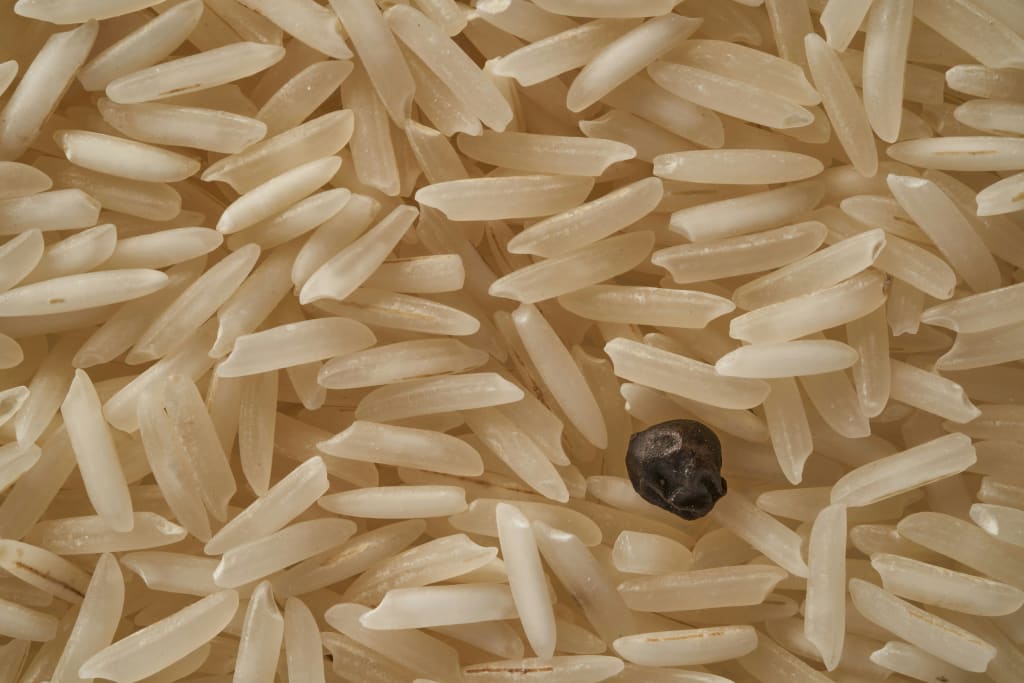The Golden Grain
Exploring the Rich Legacy and Global Appeal of Basmati Rice

Basmati rice, often revered as the "king of rice," stands out not only for its distinctive aroma and long grains but also for its cultural and economic significance. This prized variety, predominantly grown in the fertile regions of India and Pakistan, has captured the palates and markets worldwide, establishing these nations as leading exporters of rice. In this blog, we delve into the intricate details of Basmati rice, its historical roots, culinary versatility, health benefits, and its pivotal role in the global rice trade.
The Historical Roots of Basmati Rice
The origins of Basmati rice can be traced back thousands of years, with references found in ancient texts and folklore of the Indian subcontinent. The name "Basmati" itself is derived from the Sanskrit word "Vasmati," meaning fragrant. This aromatic variety was historically cultivated along the banks of the Himalayan rivers, where the unique climate and fertile soil contributed to its distinct characteristics. Over centuries, Basmati rice has become an integral part of the region’s cultural heritage, celebrated in festivals, rituals, and cuisines.
The Unique Characteristics of Basmati Rice
What sets Basmati rice apart from other varieties is its extraordinary combination of length, texture, and fragrance. The grains of Basmati rice are long and slender, and when cooked, they elongate further without increasing in girth. This quality, coupled with its fluffy and non-sticky texture, makes it a preferred choice for a wide range of dishes, from traditional biryanis and pilafs to modern fusion cuisines. The hallmark of Basmati rice is its distinctive nutty flavor and aromatic profile, which is a result of the presence of a compound called 2-acetyl-1-pyrroline.
Culinary Versatility of Basmati Rice
Basmati rice's versatility in the kitchen is unparalleled. Its ability to absorb flavors while maintaining its distinct aroma makes it a staple in various culinary traditions. In Indian and Pakistani cuisines, Basmati rice is the cornerstone of iconic dishes such as biryani, pulao, and kheer. The long grains provide an ideal canvas for the rich spices, herbs, and meats used in these recipes. Beyond South Asia, Basmati rice has found its way into Middle Eastern, Persian, and even Western dishes, showcasing its adaptability and global appeal.
Health Benefits of Basmati Rice
In addition to its culinary merits, Basmati rice is also valued for its health benefits. Compared to other rice varieties, Basmati rice has a lower glycemic index, making it a better choice for those managing blood sugar levels. It is also a good source of essential nutrients such as fiber, vitamins, and minerals. Brown Basmati rice, in particular, retains its bran and germ, offering higher nutritional content. Regular consumption of Basmati rice can contribute to a balanced diet, supporting overall health and well-being.
The Global Market and Leading Exporters of Basmati Rice
India and Pakistan are the leading exporters of Basmati rice, accounting for a significant share of the global market. India, in particular, dominates the trade, exporting millions of tons of Basmati rice annually to countries across the Middle East, Europe, and North America. The Indian states of Punjab, Haryana, and Uttar Pradesh are renowned for producing high-quality Basmati rice, leveraging traditional farming techniques alongside modern agricultural practices. Pakistan also holds a substantial position in the market, with its own unique varieties of Basmati rice that are highly sought after globally.
Economic Impact and Challenges
The export of Basmati rice plays a crucial role in the economies of India and Pakistan, contributing significantly to their agricultural revenue. The industry supports millions of farmers and workers involved in cultivation, processing, and distribution. However, the Basmati rice market is not without its challenges. Issues such as fluctuating prices, stringent quality standards, and trade regulations pose hurdles for exporters. Moreover, climate change and water scarcity are emerging concerns that threaten the sustainability of Basmati rice cultivation.
Sustainable Practices in Basmati Rice Cultivation
To address these challenges, efforts are being made to promote sustainable practices in Basmati rice farming. Integrated pest management, organic farming, and efficient water use are some of the strategies being adopted to ensure the long-term viability of Basmati rice production. Both governmental and non-governmental organizations are working towards educating farmers and providing them with the necessary resources to implement these practices. Sustainable farming not only helps in preserving the environment but also enhances the quality and yield of Basmati rice, ensuring its continued success in the global market.
The Future of Basmati Rice
Looking ahead, the future of Basmati rice appears promising, driven by increasing global demand and evolving consumer preferences. As more people become aware of its unique qualities and health benefits, the popularity of Basmati rice is set to grow. Technological advancements in agriculture and processing are also expected to enhance productivity and quality. However, it is essential for stakeholders to address the environmental and economic challenges to sustain this growth. Continued innovation and adherence to quality standards will be key to maintaining the competitive edge of Basmati rice in the international market.
Conclusion
Basmati rice, with its long grains, aromatic fragrance, and rich cultural heritage, holds a special place in the hearts and kitchens of people around the world. As a leading exporter of rice, India and Pakistan's contribution to the global rice trade is significant, driving economic growth and providing livelihoods to millions. The journey of Basmati rice from the fields of the Himalayas to dining tables across continents is a testament to its timeless appeal and versatility. By embracing sustainable practices and addressing the challenges, the legacy of Basmati rice can be preserved for future generations to enjoy and cherish.
In conclusion, Basmati rice is more than just a staple food; it is a symbol of tradition, quality, and culinary excellence. Its journey from ancient fields to modern kitchens encapsulates a rich history and a promising future. As we continue to savor its exquisite flavor and aroma, we celebrate not only a remarkable grain but also the cultural and economic tapestry it weaves around the globe.
Read More: https://gulfwaveagricom.com/
About the Creator
Enjoyed the story? Support the Creator.
Subscribe for free to receive all their stories in your feed. You could also pledge your support or give them a one-off tip, letting them know you appreciate their work.





Comments
There are no comments for this story
Be the first to respond and start the conversation.